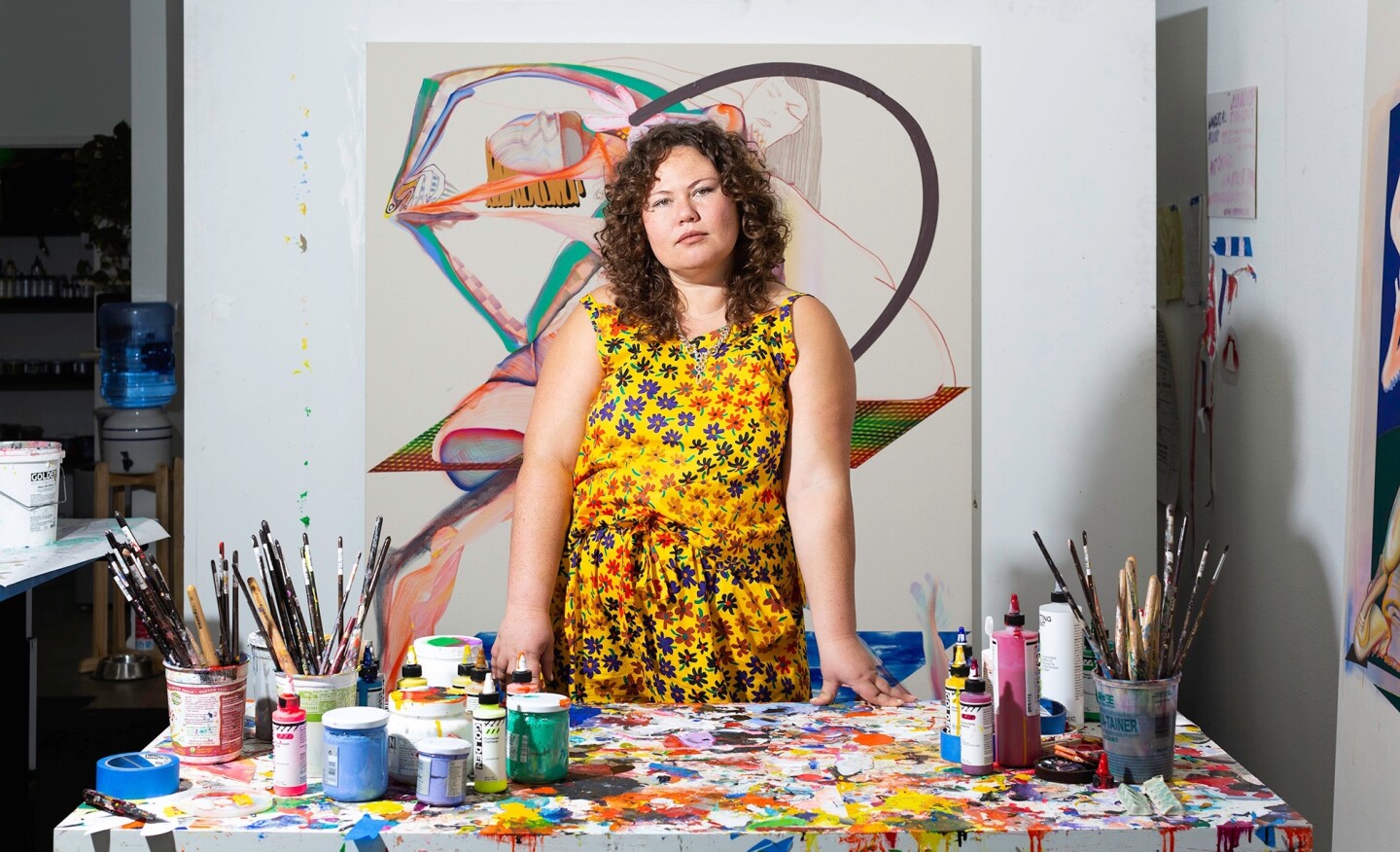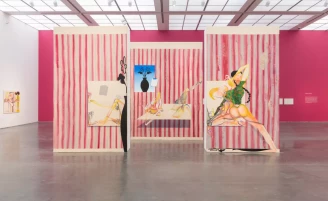“I’m really interested in exploring what it is to be within your own body looking out. I’ll often say that these are portraits, but they aren’t portraits of looking at a body—they’re portraits of living within your own body. So much of my work is about moments of intimacy when you can actually exist in all your contradictions and complications”
A mesmerizing entanglement of indecipherable intertwined figures set against a luminous nightscape, Night Fell Upon Us (Up On Us) is an archetypal example of Christina Quarles' acclaimed practice. Exploring the complexities of identity, Quarles abstracts her sensuous, dionysian figures, countering established binary categorization of race, gender, and sexuality. Through the fragmentation and convolution of forms, Quarles explores de-racializing and destabilizing orthodox depictions and connotations of the body. In Night Fell Upon Us, Quarles renders the emotional complications of identity unravelling as the viewer's eyes trace each vibrant form and experimental mark; her figures physically embody the ineffable multiplicity of the self. The present work typifies the relentless curiosity and innovative technique that has propelled Quarles' practice to critical acclaim and established her as one of the most exciting, pioneering voices in contemporary painting. Christina Quarles will be included in the 2022 Venice Biennale. The focus of numerous solo and group shows – and notably the subject of a critically acclaimed exhibition at the Museum of Contemporary Art in Chicago in 2021 – Quarles' work will also be included in The Milk of Dreams, Cecilia Alemani's exhibition at the Central Pavilion of the 2022 Venice Biennale. Her paintings are also housed in acclaimed public collections, including Centre Pompidou in Paris, Solomon R. Guggenheim Museum in New York, Hirschhorn Museum & Sculpture Garden in Washington D.C., Museum of Contemporary Art in Los Angeles, and Tate Modern in London.
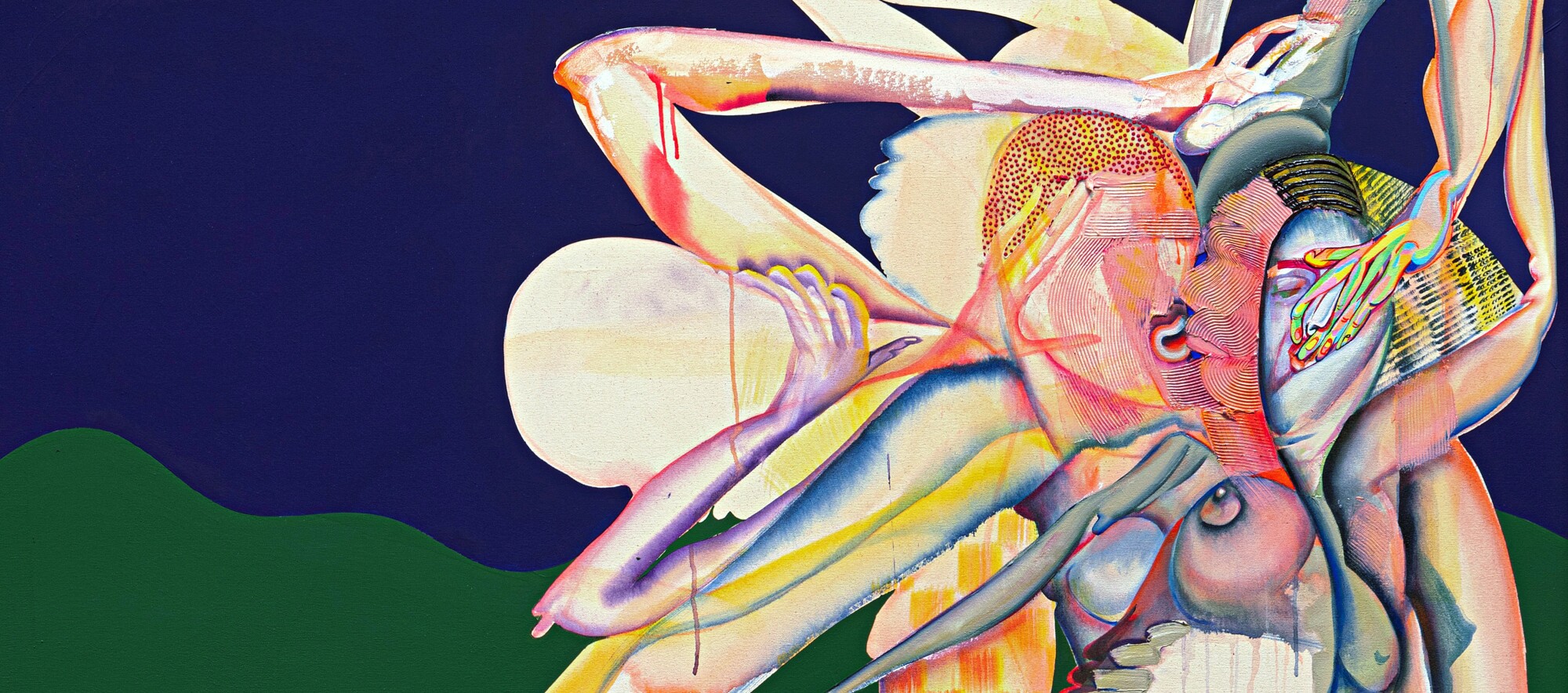
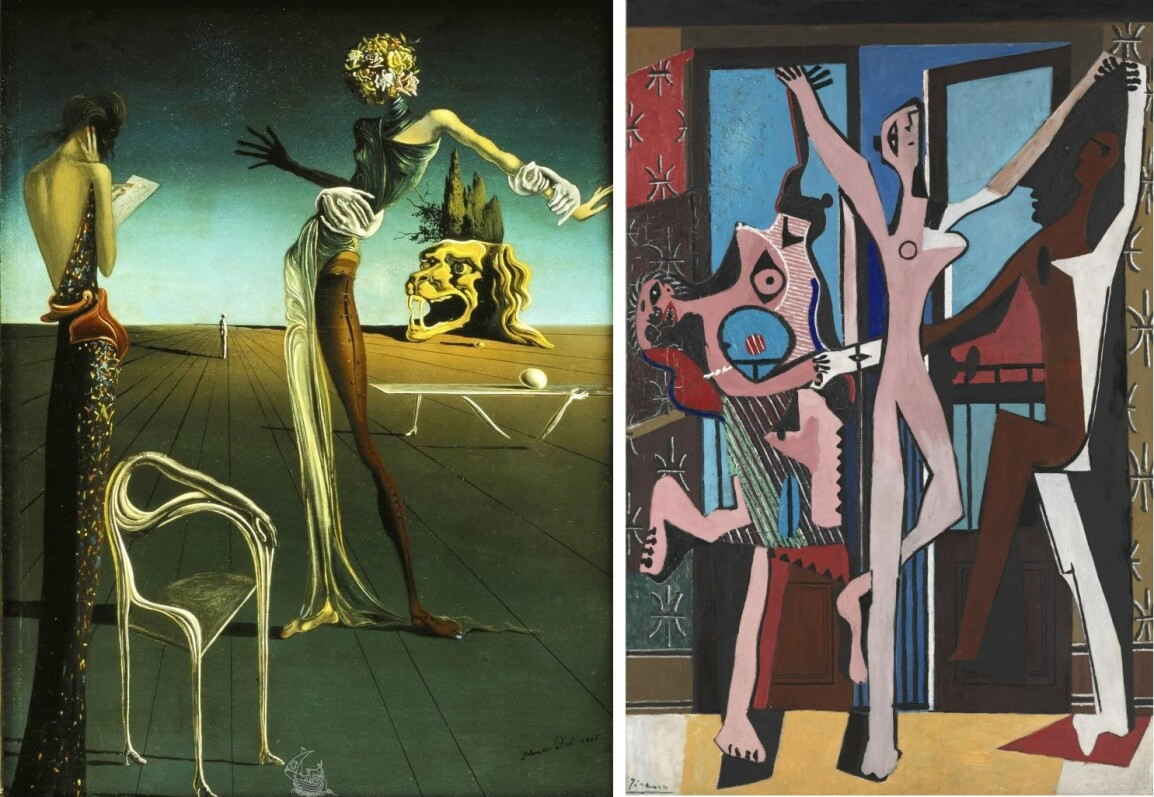
Quarles draws the pulsating fluidity of her figures from her own identity, which she often credits as a key inspiration. As Quarles explains, "The contradiction of my Black ancestry coupled with my fair skin results in my place always being my displace. Throughout my paintings, there are perspectival planes that both situate and fragment the bodies they bisect—location becomes dislocation. Fixed categories of identity can be used to marginalize but, paradoxically, can be used by the marginalized to gain visibility and political power. This paradox is the central focus of my practice." (Christina Quarles, "Artist Statement," christinaquarles.com (online)) Suspended in planes of matte color, the entangled figures languidly sprawl across an ambiguous landscape, their bodies evocatively contoured with brightly saturated hues and intricate patterns. Two faces kiss within the sensual web of oscillating limbs as Quarles' figures seemingly fuse and morph into one another, destabilizing the boundaries between each form. The unadorned background juxtaposed against the vivacious sinuous figures that simultaneously intertwine and unravel is evocative of a surrealistic scene. Writhing with passionate intensity, the figures press together, their hips both convulsing apart and merging in an entrancing entanglement of unrestrained hedonism.
Quarles employs experimental and expressive brushwork, capturing a sense of motion almost akin to an Italian Futurist painting. Each position and figure seems to leave an imprint of itself. As the viewer's gaze follows each straining palm and outstretched appendage to the next, deciphering the delineation between figures becomes senseless. Quarles' unabating rejection of singular descriptors allows her to capture the intoxicating beauty of ambiguity. With exceptional dexterity and painterly innovation, Quarles encapsulates the non-binary fluid of reality, challenging the viewer to revel in the multiplicity of the universal human experience. In Night Fell Upon Us, Quarles examines the nuanced complexities of the social and psychical experiences of existing within a body, with a partner and within a group. A dynamic energy pulsates through Quarles' seductively variable brushwork, animating the painting with the endless possibilities unlocked by the figures' tender intimacy. "I use the medium of painting," Quarles said, "with its historical connotations, to activate something that can go beyond fixity." (Christina Quarles quoted in: Jareh Das, "Sitting With Discomfort: Christina Quarles Interview", BOMB, 21 July 2021 (online))
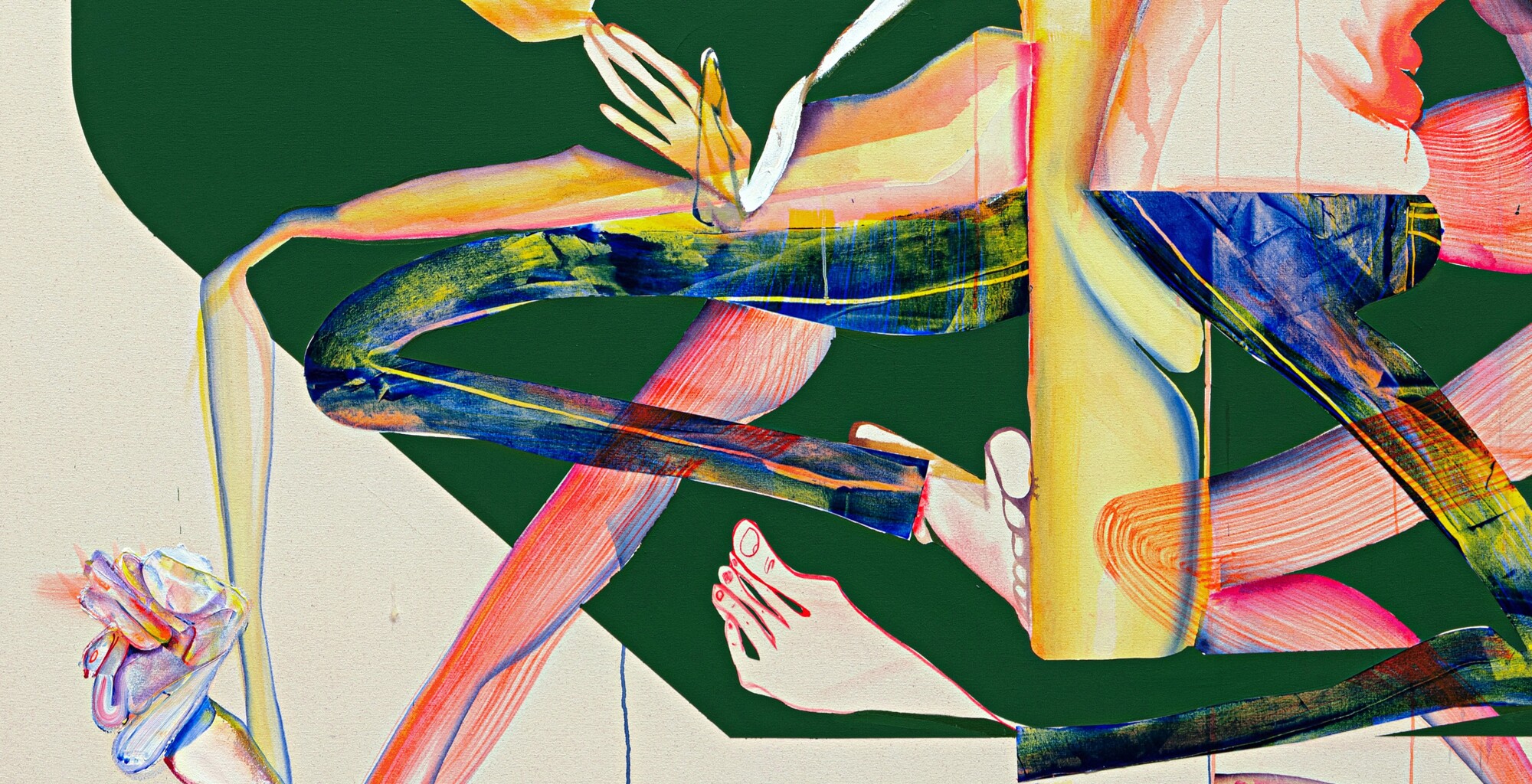
A sublimely paradoxical scene, Night Fell Upon Us explores the dichotomies of the self, illuminating the intersection of gender, sexuality and race while underscoring the diversity and complexity of the universal experience. Quarles' figures and environment are piquantly captivating; the gestural lines and experimental technique allow the forms to flow, contort and evolve with the viewer. Describing her practice, Quarles explains, "what interests me are themes of the sort of fragmentation that happens of yourself when you are in your body and really at a disadvantage in the way of knowing yourself because you know all [your] contradictions, all the ways you exceed or don't quite fit into these certain categories of identity that we're placed in. And yet we experience a world of other people where [they are] these cohesive figures ." (Christina Quarles quoted in: Claire Selvin "Christina Quarles on the Intricacies of Figuration and Selfhood" ARTNews, 15 April 2021 (online)) In Night Fell Upon Us, the variety of painterly methodologies and the myriad of organic forms and shapes illustrate a visual analysis of identity, one that delights in the non-binary and challenging to define.
